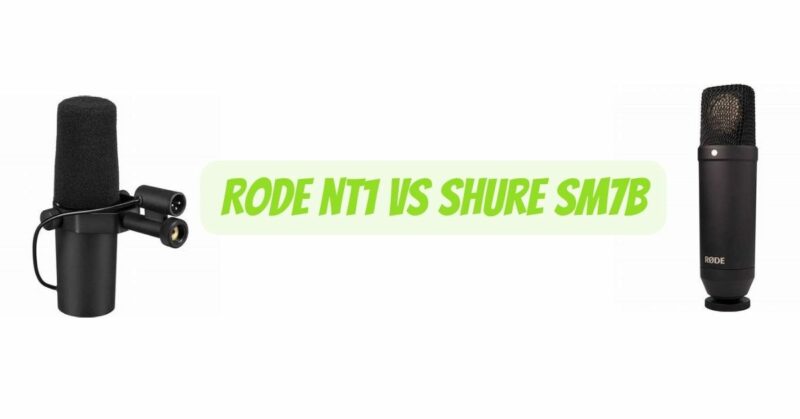When it comes to professional studio recordings, the choice of microphone plays a crucial role in capturing pristine audio. The Rode NT1 and the Shure SM7B are two dynamic microphones that have gained widespread recognition for their exceptional sound reproduction and versatility. In this article, we will explore the features, performance, and overall value of the Rode NT1 and the Shure SM7B, providing insights to help you make an informed decision when selecting the perfect dynamic microphone for your recording needs.
- Design and Build Quality :
The Rode NT1 features a sleek and durable design, constructed with precision engineering and attention to detail. Its matte black finish exudes elegance, while its solid build ensures longevity and reliability. The NT1 also includes a shock mount and a pop filter, offering added convenience and value.
The Shure SM7B showcases a robust and iconic design. Its rugged construction and metal casing make it suitable for professional use, ensuring durability in demanding studio environments. The SM7B features an integrated pop filter and a detachable windscreen, providing flexibility for different recording scenarios.
- Sound Quality :
The Rode NT1 boasts exceptional sound quality, capturing audio with clarity and precision. Its wide dynamic range and extended frequency response ensure accurate and detailed sound reproduction. The NT1 delivers a balanced and transparent sound, making it well-suited for vocals, acoustic instruments, and other studio recording applications.
The Shure SM7B is renowned for its warm and rich sound character. Its flat, wide-range frequency response captures vocals and instruments with depth and clarity. The SM7B excels in recording spoken word, vocals, and instruments with a focus on warmth and smoothness.
- Versatility and Application :
The Rode NT1 offers versatility in various recording scenarios. Its cardioid polar pattern effectively isolates the sound source, minimizing background noise and providing focused recordings. The NT1 is suitable for capturing vocals, acoustic instruments, and even percussion, making it a versatile choice for home studios and professional recording environments.
The Shure SM7B is highly versatile, catering to a wide range of recording applications. Its cardioid polar pattern provides excellent off-axis rejection, reducing unwanted noise and reflections. The SM7B is commonly used for vocals, broadcasting, podcasting, and recording loud instruments such as drums and guitar amplifiers.
- Workflow and Technology :
The Rode NT1 offers a straightforward and user-friendly workflow. Its dynamic element eliminates the need for phantom power, simplifying the setup process. The NT1 requires minimal adjustments, allowing artists and engineers to focus on their creativity without being hindered by technical complexities.
The Shure SM7B incorporates advanced technology and features. Its internal shock isolation eliminates mechanical noise and vibrations, resulting in clean and focused recordings. The SM7B also includes a presence boost switch and bass roll-off controls, providing additional flexibility to tailor the sound to specific preferences and recording environments.
- Price and Value :
The Rode NT1 is considered a great value for its price. It offers professional-grade sound quality, durability, and a complete package with the included accessories. The NT1 is an affordable option for home studios and budget-conscious professionals seeking high-quality recordings.
The Shure SM7B commands a higher price due to its reputation, versatility, and advanced features. It is regarded as an industry-standard microphone and is favored by professionals in various recording disciplines. The SM7B’s build quality, sound character, and versatility make it a worthy investment for those seeking top-tier performance.
Conclusion :
Choosing between the Rode NT1 and the Shure SM7B depends on your specific recording needs, budget, and preferences. Both microphones offer exceptional sound quality, versatility, and build quality. The NT1 provides a transparent and detailed sound, suitable for various studio recording applications. On the other hand, the SM7B offers a warm and rich sound character, ideal for vocals, broadcasting, and capturing instruments with depth.
Consider your recording requirements, budget, and long-term goals to determine which microphone aligns best with your needs. Whether you choose the NT1 or the SM7B, both microphones are capable of elevating your recordings and delivering outstanding audio results.


